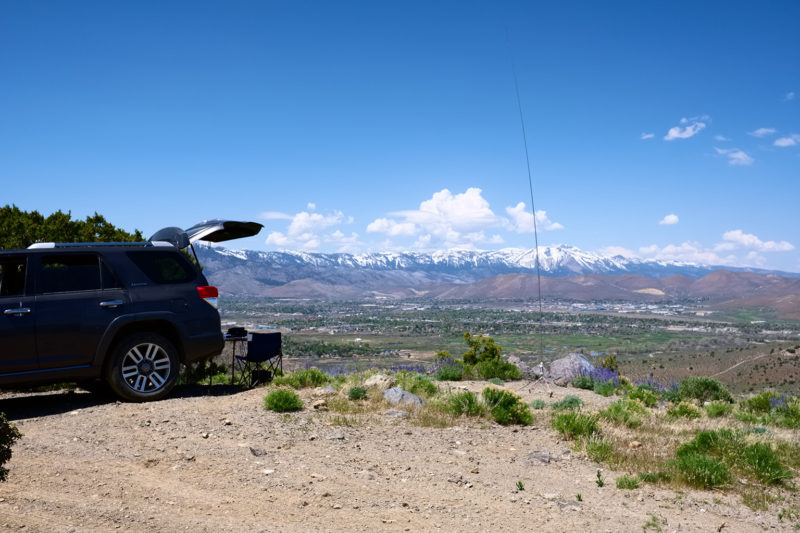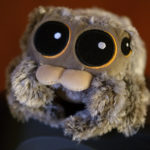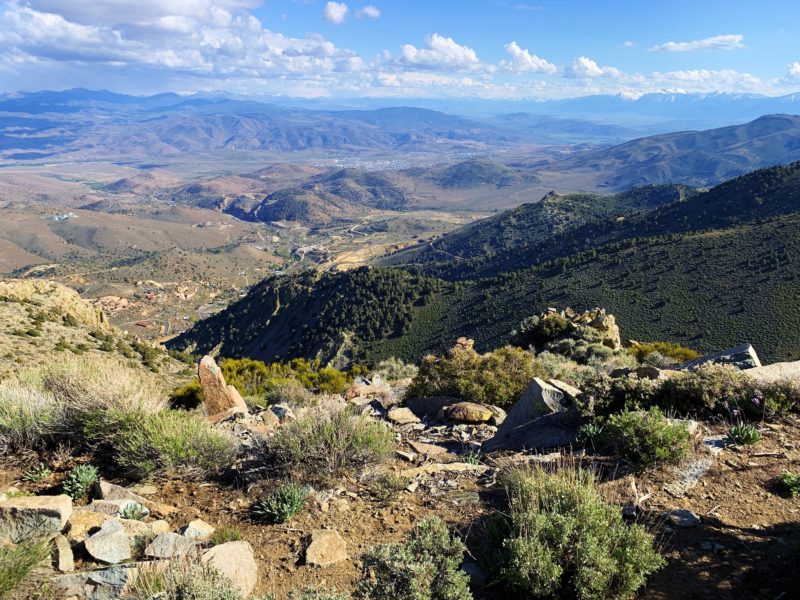
A few weeks ago, my friend and amateur operator suggested we do another Summits On The Air (SOTA) activation. He had chosen a mountain not far from Carson City.
Yesterday, Older Son and I had just started our walk with The Girl out at the Mexican Ditch Trail on Silver Saddle Ranch. I had a handheld radio with me (of course) and called another friend to see if he was walking his dog.
My SOTA-hunting friend responded to my call and we chatted about a group meeting he had been to when he asked if I was interested in the SOTA activation we discussed a few weeks ago.
“When would you like to do that?”
“How about today?”
I looked at Older Son, he nodded. “We just started walking The Girl. We’ll go pick up a sandwich, load up some radio equipment, and give you a heads-up.” We shortened our walk a little because I knew there would be plenty of exercise for everyone. On the way home, we stopped at Subway for a couple of sandwiches, then went home, ate, and gathered up my radio gear.
We met where the pavement ends on Goni Road. After a pause for an introduction and rough plan, we headed out with our friend in the lead. The first part of the road is well-maintained. But it turned to a trail after a mile or so.
The trail varied in condition but was not technically difficult, with the exception of one short segment. Just before we reached the aspen grove, there was a snowbank. At this time of year, the snow is very dense. I had some trepidation about it, watching the Scout cross gingerly. So, I headed down the trail and crossed the snow crabwise with little traction to steer or slow. I knew there was nothing to be gained by hitting the brakes except to exacerbate the slippage and find myself stuck sideways off the trail — or worse.
After traversing the snow, I knew there would be no going back that way for my 4Runner. Our friend called on the radio “We’ll find another way back. We have options.”
We crossed the intersection of Jumbo and Ophir Grades and he told us how the Bonanza writers got much of the history of the area right. Before long we started up the last bit of grade, which had a couple of rough places but nothing the 4Runner could not handle.
There is a turn-around/staging area a couple hundred yards from the summit of Mount Davidson. We pulled up there.
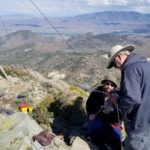
“I’m always in favor of scouting so there is a plan,” I suggested. So, we added a layer of clothing because the wind was fast and cold and started up the slope.
It is not a particularly difficult hike, but there is some elevation gain and many sharp rocks to deal with. I worried a little about The Girl, because she is sometimes not the brightest bulb in the box and could fall on some of the steeper sections. But she proved to be mostly careful and does have full-time four-wheel drive. She needed a little encouragement/help at a couple of locations and I kept an eye on her the remainder of time lest she wander off and fall.
The summit of Mount Davidson is interesting. There are remnants of a couple of antennas up there, perhaps from either temporary installations or old repeater locations. But of significant interest is an old flagpole that was first installed in the late 1800s. At some point, the pole bent about 10-15 feet above the base and was repaired by placing a second pole (or the remnants of the first) adjacent to the base and tying them together. There are many names and dates embossed on the steel of the flagpole. We spent a few minutes looking at that and then planning our station.
We then humped it back down the hill, retrieved the appropriate equipment from the rigs, and hauled it all back up the hill. Older Son and I began assembling my antenna (a vertical all-band base-loaded whip with a lot of ground radials) while the third component of our little company assembled the station.
The Girl stayed on overwatch and made sure no gnarly squirrels or other riffraff ambushed the company.
We tuned up the antenna for the 40-meter band and gathered around the radio. Fortunately, I brought log materials and Older Son brought water, so we were ready to go.
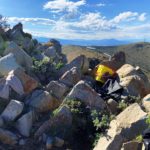
Of course. We all shared some of the cookies.
Our leader called CQ-SOTA several times and got an answer from a British Columbia station. I had log duty and made the log entry. He called several more times and then offered me a shift on the radio.
The Girl came back in from perimeter duty and sat next to us, shivering a little. Older Son called her over to snuggle and warm up. We had some sun and shelter from the wind, so it was cool but not cold.
While I called CQ-SOTA, he logged into the SOTA website and “spotted” us. That means he logged an entry that we were working the Mount Davidson SOTA site so other operators could find us. I then proceeded to make five contacts, some of them contacts I had made before, some of them new contacts. I needed four contacts to log the activation (and get the points).
I handed the microphone back to our leader and took up my position with the log.
Not long after he took up operations, The Girl sat on a flat spot and looked at Older Son and I. I know my dog. She was sending a definite message. She said “I’m done now. The perimeter is patrolled and there is nothing to do. I’m ready to go home. Why are we still here? Don’t you understand, I’m done — I’m ready to go home. Take me home.”
He made another contact before the battery went dry. He and Older Son started over the hill to retrieve my battery. I stayed on the summit with The Girl and the gear. It was not long before their voices grew louder. I knew they were returning.
“We’re losing daylight,” our leader said, “I hate to give up, but we better tear down and pack out.”
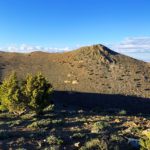
We chatted over the radio now and again as out leader pointed out various sights along the way. At the bottom of the hill we pulled up. “I’m whooped,” he said, “coffee will have to be another time.”
We said our goodbyes, he teased me about “stealing the glory” on this one, and we headed down the hill.
I still wanted coffee and pie, so Older Son and I drove through Carson City to Bodine’s Casino and hit the restaurant there. I like it because the coffee is good and they have a wonderful berry cobbler. I was also hungry, so I ordered off the plate menu (and bargain) and gobbled my food. It was a lot of work in the cool air to set up and run that SOTA activation.
Filled with warm food, coffee, water, and cobbler, Older Son and I headed home to pack it in. We got home about 2200h. It was a good day.
